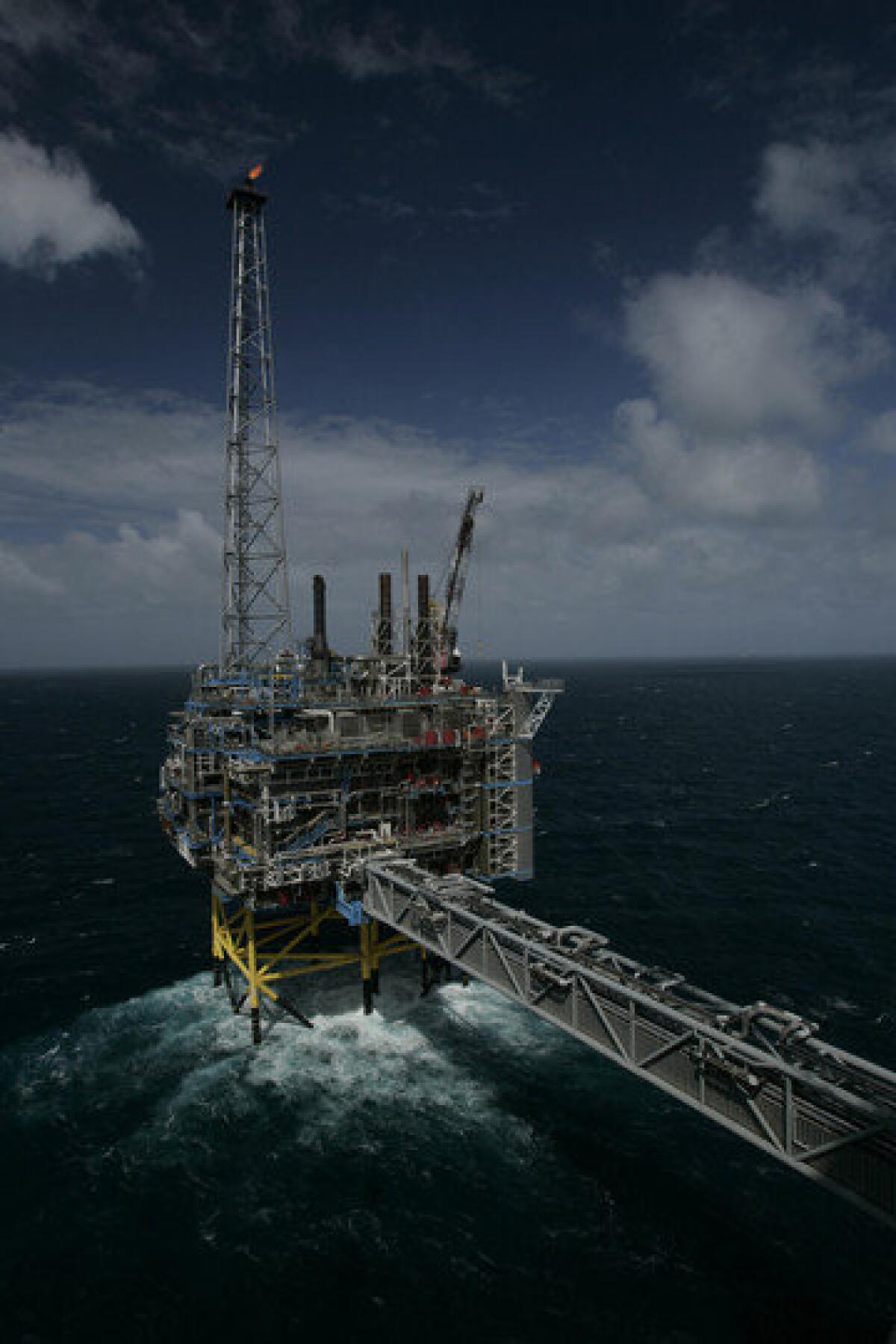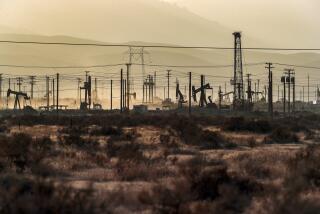Underground carbon dioxide storage likely would cause earthquakes

- Share via
The notion of mitigating harmful carbon dioxide emissions by storing the gas underground is not practical because the process is likely to cause earthquakes that would release the gas anyway, according to a commentary published Monday in Proceedings of the National Academy of Sciences. While the scientists do not expect that the approach would cause any large and dangerous seismic activity, they say it is likely that the earthquakes would be severe enough to jeopardize the ability to store the gas underground over the long term.
Some scientists and government officials have proposed dealing with human-generated carbon emissions with a process called “carbon capture and storage,” or CCS, in which the gas is separated from the emissions of a coal-burning power plant, captured, and then injected underground at high pressure.
The problem is that much of the Earth’s crust hangs in a tenuous balance, so even a slight change in underground pressure can cause small earthquakes. While these earthquakes might not knock down any buildings, they would almost certainly ruin the CCS site and return it to square one, said Mark Zoback, a geophysicist at Stanford University and an author of the commentary. “If even a small leak develops, you’ve not succeeded in doing anything for the environment,” Zoback said.
The first evidence that underground injection of pressurized materials can cause earthquakes arose out of a scary situation that took place in Colorado in the early 1960s, where the Army was injecting waste deep into a well at its Rocky Mountain Arsenal. Earthquakes were felt in Denver, and it soon became clear that the two events were linked.
U.S. government scientists followed up this observation with a formal test of the connection. On Nov. 10, 1970, in an oil field in northwestern Colorado, the researchers achieved a stunning feat: They successfully turned earthquakes off and back on again. Whenever the scientists increased the pressure by injecting water deep underground, earthquake activity picked up. When they backflowed the water out of the well, the needles on their seismographs went quiet. The earthquakes were not dangerous, but they were definitely caused by the change in pressure underground, the scientists reported.
The argument over whether methods that rely on underground injections of liquid and gas can cause earthquakes has been intensifying of late. Hydraulic fracturing, a process that shoots chemicals into rock formations to release natural gas, has caused particular concern because gas companies are pushing for rapid expansion of the approach.
But last week, the National Research Council released a report saying that hydraulic fracturing, also known as “fracking,” carries a low risk of such earthquakes. They could not say the same for carbon storage, instead writing that CCS “may have potential for inducing larger seismic events.”
In the new Proceedings of the National Academy of Sciences commentary, the authors argue that safe sites are likely to be limited and hard to find, since only the underground dynamics that would lead to large earthquakes are easily and cheaply detectable. “In many cases, you’ll get small to medium size earthquakes, and man, that’s the end,” Zoback said. “And if it is in a populated area, there is going to be a ton of concern about the leak, whether it’s safe to be there. So there’s this very strong downside for what is almost an inevitable event. Do we really want to take that risk with our time and money?”
And, Zoback added, in order to make any sort of dent in emissions, some 3,500 CCS sites would have to be found and injected, a process that would take decades and cost trillions of dollars. As a result, he said he believes our resources are better spent on other technologies and approaches to mitigating climate change.
“I take the greenhouse gas problem and climate change very seriously, and I’d like to see our effort focused on approaches that will be more effective,” he said. “Let’s do all of those things that we know will be beneficial and will have long term payback. Wind and solar are now getting competitive with fossil fuels. Natural gas is cheaper than coal now. In 40 years we could be using all renewables. I think CCS in comparison is just too expensive and too risky.”
Return to the Science Now blog.






